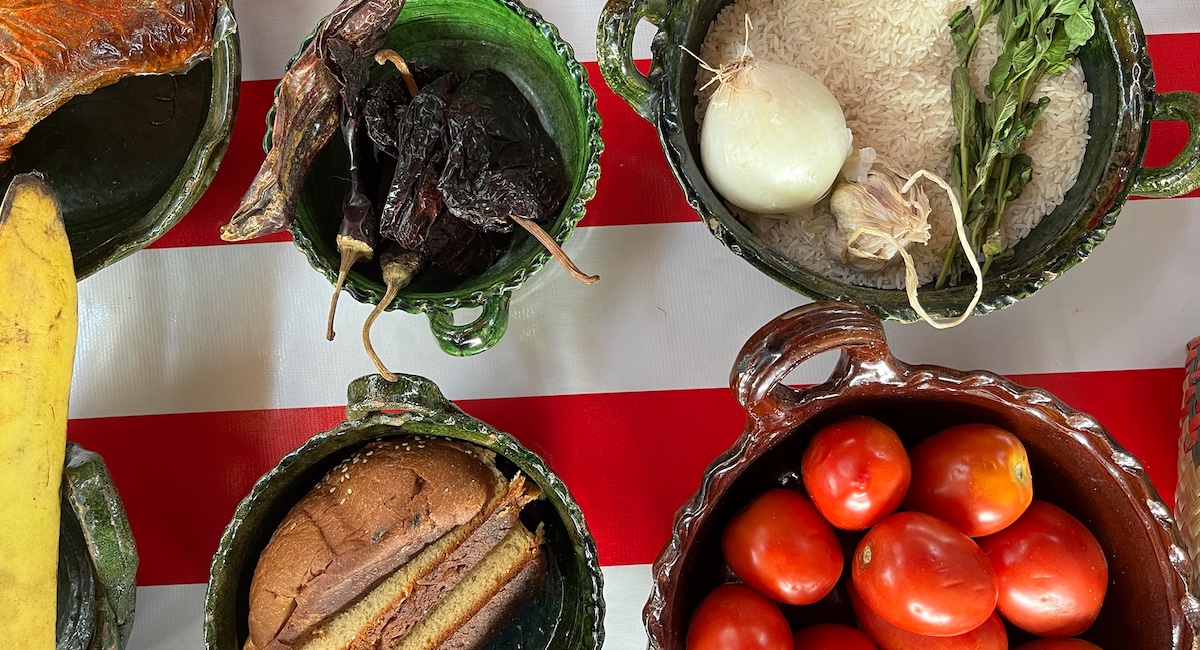Whatever our differences, we all have to eat. In the United States, where we can choose foods from all over the world, ethnic cuisine has become American as apple pie.
Journalists and chefs explored how the U.S. has welcomed and changed diverse eating traditions, and why, at a press briefing hosted July 1 by Ethnic Media Services and John Rudolph, of Feet in Two Worlds.
The speakers described the powerful connections that come from the heritage, sharing and innovations ethnic and immigrant communities have provided our expanding “food ways.”
They also noted positive and problematic aspects in their adoption into America’s capitalist society. Besides providing new twists and wider appreciation, the dominant culture also appropriates and dilutes what ethnic communities introduce.
Culture begins with cuisine
Quincy Surasmith, an editor at Feet in Two Worlds, and host of the podcast Asian Americana described his work sorting out the differences between “traditional” and “authentic” Asian American dishes, from chop suey to Korean barbecue, fortune cookies, adobo, Indian curry pizza, California rolls, tofu tater tots and more.
“Things change and shift here because of cultural influence and what is available,” Surasmith said. “It’s all authentic. Authentic is different than traditional.”
“It’s authentic to a different set of cooks, different set of restaurants, different regions. And these get to grow and evolve in the U.S.,” Surasmith said.
He cited the Boiling Crab restaurant chain borne of Vietnamese American communities on the Gulf Coast, to Korean barbecue styles developed in Los Angeles and more.
“I want to encourage people to think about food as signposts to all the intersecting roads it’s crossed, the specificity of the region or people, whether in the U.S. or where their families or they themselves are from.”
“I used to be very against fusion cuisine, until I realized that most cuisines ARE fusion,” said food and travel writer Kayla Stewart, native of the “rich and complex” American South.
“African American cuisine in many ways is a mixing of indigenous food and traditions. Black, African, West African food and traditions and of course even European,” she said.
“You see this particularly in New Orleans,” she laughed, admitting to a particular affection for the cuisine of that melting pot Southern city from which “jambalaya” and “gumbo” have become English-language synonyms for a healthy mix of anything.
There, she said, the mix of ingredients, food and traditions draw from Black, African, West African, indigenous and European influences, including traditions brought from Africa such as sweet potato pie, okra and black-eyed peas.
“So many times in my work,” Stewart said, “people assume that African American food is macaroni and cheese, collard greens and fried chicken.”
“While those are wonderful, wonderful meals and absolutely part of our food ways,” she said, they’ve also been used to insult, stereotype and minimize Black contributions to American cuisine.
“For so long, black Americans and black culinary figures have been left out of the narrative of American food. It’s blatantly unfair, but it also impacts economics.”
“Food can be such a joyful and wonderful thing, but it also is an opportunity to talk about the very real issues – history, and politics, and race, and gender, and women’s rights – that have existed in our country since its founding and continue to exist.”
‘An endless source of inspiration’
Silvana Salcido Esparza, raised in bakeries in “the cornucopia of the world,” California’s San Joaquin Valley, described a lifetime of lessons learned on the way to her wide renown for her Mexican fare and innovative Arizona establishments – renown that includes repeated recognition from the prestigious James Beard awards.
“There is a lot of politics in food,” she said. “I don’t do food for me. One thing they say in my culture is: They want the taco but didn’t want the taco maker.”

At those California bakeries where she was raised, she recalls their immigrant field laborer customers, who’d barter tomatoes and peaches for the bread or milk her father provided, and also get help from children there to translate forms, job applications and such.
“Our bakery became the hub for our culture” – as did her uncle’s bakery, she said, for the United Farm Workers in Delano.
“I knew as a child, that’s my foundation. We’re of service to our community, through our food and our bread.”
Mexican food as generally experienced in the United States, she said, “is not really Mexican food. It is more ‘necessity food.’”
“When I first opened, 20 years ago, the number one thing I could see was the consumer was not experiencing my kind of restaurant from a Mexican chef.”
“They expected chips and salsa. … Baker’s daughter, I gave them bread. They expected combination plates. ‘Where’s the tortillas? Where’s the sauces?’ I gave them none of that. Instead, I gave them regional food.”
“I use it as an opportunity to change erroneous perceptions that North Americans have not only over the food from Mexico, but of the culture. That was 20 years ago. And that fight is still going.”
From Mexico, she said, we got corn, tomatoes, chilies, beans, papaya, pineapples – “chocolate, for Christ’s sake! – and technique, such as barbecue pit cooking.
“I traveled the country – 17 states – studying American barbecue as a Mexican chef,” she said. “And what I found is that there’s a white supremacy that has taken over that food.”
“It’s typical not of assimilation, but appropriation, because that food developed out of Mexican culture into Texas and the rest of America.”
And then, some of the best innovations in barbecue came from enslaved cooks finding ways to make palatable scraps left off the tables they served, she said.
“There’s a lot of culture in food,” John Rudolph, founder of Feet in 2 Worlds which produces the blog site Food in 2 Worlds, concluded. “It’s about history. It’s about politics. A lot of personalities, a lot of great stories, an endless source of inspiration.”




